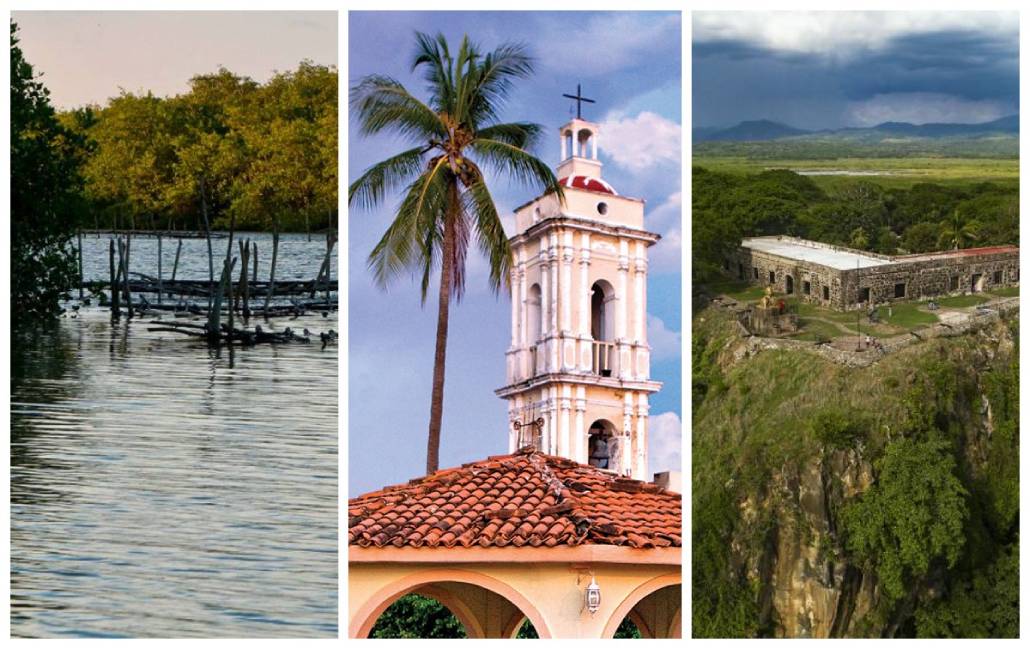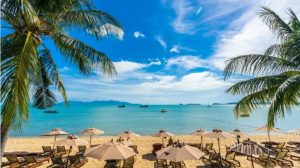To the north of the state of Nayarit is located what in its time was called the "Gold Coast", due to the wealth generated by the extensive tobacco fields; currently, the beaches of that region offer the experience of living with nature almost intact.
The Riviera Nayarit It is known for its long coastline of more than 307 km, where luxurious developments such as Nuevo Vallarta and Punta de Mita are located, or the emerging Compostela, places where tradition coexists with hotel glamor. However, there is another coast further north ─which covers the municipalities of San Blas, Santiago Ixcuintla and Tecuala─ that is also part of this tourist destination.
In the 1970s, this extension (mainly Santiago Ixcuintla) was called the "Gold Coast" since it was developed under the protection of extensive tobacco fields, an activity that generated great economic wealth, although over the years it has been declining.
Historical vestiges converge equally in the area with the purest nature and the most authentic gastronomy; It is ideal for those seeking tranquility, without the crowds of the most popular tourist destinations.
Get to know the towns that are located on the North Coast of Riviera Nayarit:
MOUTH OF CHILA
This micro-destination offers adventurers the opportunity to live an exciting experience and appreciate the flora and fauna of the area up close, as it is a mangrove area inhabited by various aquatic and underwater birds. Its beach, lonely most of the year, has an extension of 8 km and is frequented by followers of the best waves for surfing and also by those who value history, since 8 km from there, in the town of Zacualpan, a series of rock engravings found very close to the beach is on permanent display.
What to do | When you visit this beach you will be able to enjoy completely virgin seascapes and, if you are lucky, you will witness to the arrival of an olive ridley turtle that chose this coast to spawn; or better yet, the release of some hatchlings of turtle.
Learn more about Boca de Chila: https://www.rivieranayarit.com.mx/nuestros-pueblos/boca-de-chila/

SAINT BLAS
San Blas is known for its paradisiacal beaches and its great diversity of migratory and endemic birds but, above all, for its historical past. Visiting it is transporting yourself to times past, when it was the most important port on the Mexican Pacific coast ─in the year 1700─, a time when Mexico was still part of the Spanish crown.
Currently, San Blas maintains its essence as a traditional Mexican town and is the perfect destination for a walk with the family. It is also one of the most important destinations for bird watching in Mexico, attracting thousands of birders from North America and the United Kingdom each year.
What to do | Swim at Las Islitas, El Borrego, Los Cocos and Aticama beaches. Join a tour through the mangroves to see rare bird species and visit the Contaduría ruins on Cerro de San Basilio, which dates back to the 16th century. In addition, you can visit La Tovara National Park, an incredible network of estuaries and canals surrounded by exuberant vegetation.
More information about San Blas: https://www.rivieranayarit.com/destinations/san-blas/
SANTIAGO COAST
The coast of Santiago Ixcuintla is a place that reflects the colors and essence of Mexico, it is distinguished by the friendliness of its people and the cultural and historical sense that it keeps in all its corners. To the southeast of the municipal seat there are virgin beaches such as Los Corchos, with a gentle tide; that of Sesteo, which has a camp to protect the olive ridley turtle, and Boca de Camichín, which has a more notable tourist development. It is located in the area where the San Pedro River converges and forms one of the largest estuary and marsh areas in Nayarit, very rich in marine species such as shrimp, snapper, sea bass, and oysters.
What to do | EITHERbserIt goes to the fishermen who master the artisan process of oyster farming. Travel the estuaries by boat to admire the great diversity of birds, until you reach Jaguar Island (where the National Commission of Protected Natural Areas, Conanp, has installed cameras to study the cats in the area), or sails to Isabel Island or to Mexcaltitán Island.
Discover the Coast of Santiago: https://www.rivieranayarit.com.mx/nuestros-pueblos/costa-santiago/

TECUALA COAST
The last municipality north of Nayarit is Tecuala; and the Riviera Nayarit extends as far as the beautiful El Novillero beach, which holds the Guinness Record as the longest beach in Mexico, reaching 85 km long and almost half a km wide. Tecuala is considered the "capital of botaneros", which are rustic restaurants by the sea where you can enjoy the widest variety of snacks based on seafood and fish; these are offered free as an accompaniment to drinks. You can also visit the marsh area to enjoy the freshest oysters.
What to do | In addition to walking for the beach, walk through the mangroves, observe the abundant fauna and visit the Agua Brava Lagoon.
More about Playa Novillero: https://www.rivieranayarit.com.mx/nuestros-pueblos/novillero/

Riviera Nayarit is a safe destination. Hotels and restaurants are following all the sanitary protocols established by the Federal Government Health Secretariat and are operating at their permitted capacity; access to the beaches is limited. Be a responsible tourist, use a mask and watch your distance.
- Huichol Handicrafts: The best and most beautiful in Mexico - 11 April 2023
- Compostela, Mexico's magical town that evokes Spain - 28 March 2023
- Nuevo Vallarta, where action and relaxation meet - 10 March 2023





